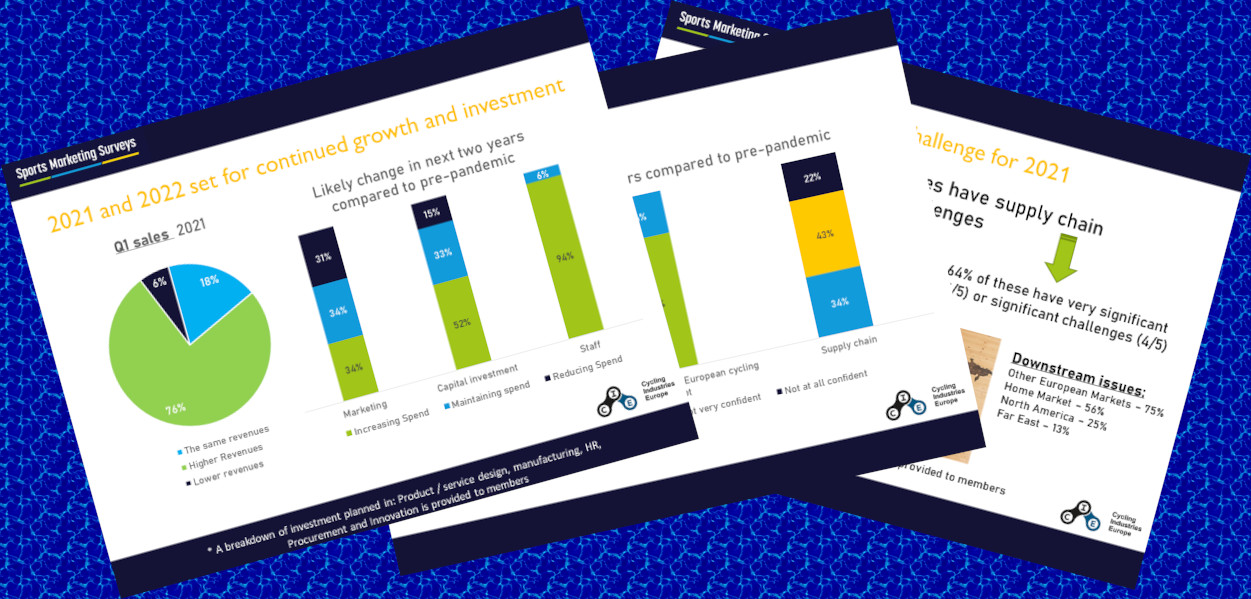CIE’s latest COVID Impact Survey shows 95% of companies planning to increase staff, but supply chain challenges unlikely to be resolved in 2021
In the darker days of the COVID pandemic and during the subsequent boom in cycle use one of the consistent challenges for businesses has been reliable data on trends and impacts. Not just reporting sales figures, but testing the impact on employment, investment, marketing and supply chains.
And that is where CIE’s Business Impact Surveys have come into their own. The four surveys conducted since March 2020 provide an invaluable picture of how COVID-19 affected the cycling industries of Europe. Because CIE combines large and small manufacturing companies as well as leaders in bike sharing and other services it also provides a more rounded analysis than just sales statistics.
High sales figures have dominated industry news and this is confirmed by the latest survey, with the bike, parts and accessories companies showing over 30% higher revenues in Quarter 1 2021 than the prior year. What the CIE Impact survey shows is how these numbers are flowing through to other business indicators.
94% of survey respondents are planning to increase staffing in the next two years, while 57% had already done so at the end of 2020. As well as staffing the industry is confident about increased investment in their businesses, with planned increases in capital investment, research and new product development.
Concerns highlighted by the survey fall into three areas. The bike sharing sector is least confident, with a significant proportion of companies reporting that revenues have yet to recover to pre-virus levels, most likely caused by users still not returning to workplaces. A surprise in the numbers was that marketing expenditures are not following other investments or staffing levels. Only 34% of companies are planning to increase marketing spend, while 31% are still expecting reductions. This could have a knock-on effect to advertising, trade shows and sponsorships.
The biggest industry challenge by far is supply chain. This can even explain why companies are holding back marketing spend, because there is limited value in marketing bikes that cannot be provided. Supply chain pressures are the talk of the sector at the moment and the CIE Business Impact Survey puts values to the problem. 85% of companies are experiencing problems (100% of the bicycle and accessory companies) and 86% don’t expect improvement for at least six months. Particular pressure is seen in supplies from Asia, and the problem spreads across components, raw materials and electronics.
CIE’s Chief Executive Kevin Mayne said “The CIE COVID-19 Business Impact Surveys are essential resource, and not only for companies. It has been a powerful tool for CIE to present to the European Commission and national governments, showing them that investment in cycling and cycling infrastructure flows straight through to European jobs. When we combine these surveys with wider data on cycle use and government investments we can provide real insights into markets now and in the future.
I want to thank our members for their contribution to the survey, SMS for their expertise in operating the survey and our Market Impact Intelligence Expert Group who provide us with the inside track on what is happening across all sectors of cycling.”
Data for all four surveys were collected between March 2020 - April 2021 by Sports Marketing Surveys acting in partnership with Cycling Industries Europe.
Marc Anderman, SMS’ representative on CIE’s Expert Group, commented, “The European Cycling Industry should be hugely proud of what it has achieved over the last year. Going forward, demand, both consumer and business, is predicted to remain high, but that wasn’t always a given. Many businesses needed support to navigate initial losses. What’s clear is that that support has been more than worth it. Fiscal support enabled the cycling industry to be in the position it is in now, where it can be a success story on multiple levels, creating investment, jobs and revenue and driving social change.”
A presentation of the report headlines can be found here.
Share on Linkedin Share on Facebook Share on Twitter Subscribe to our newsletter